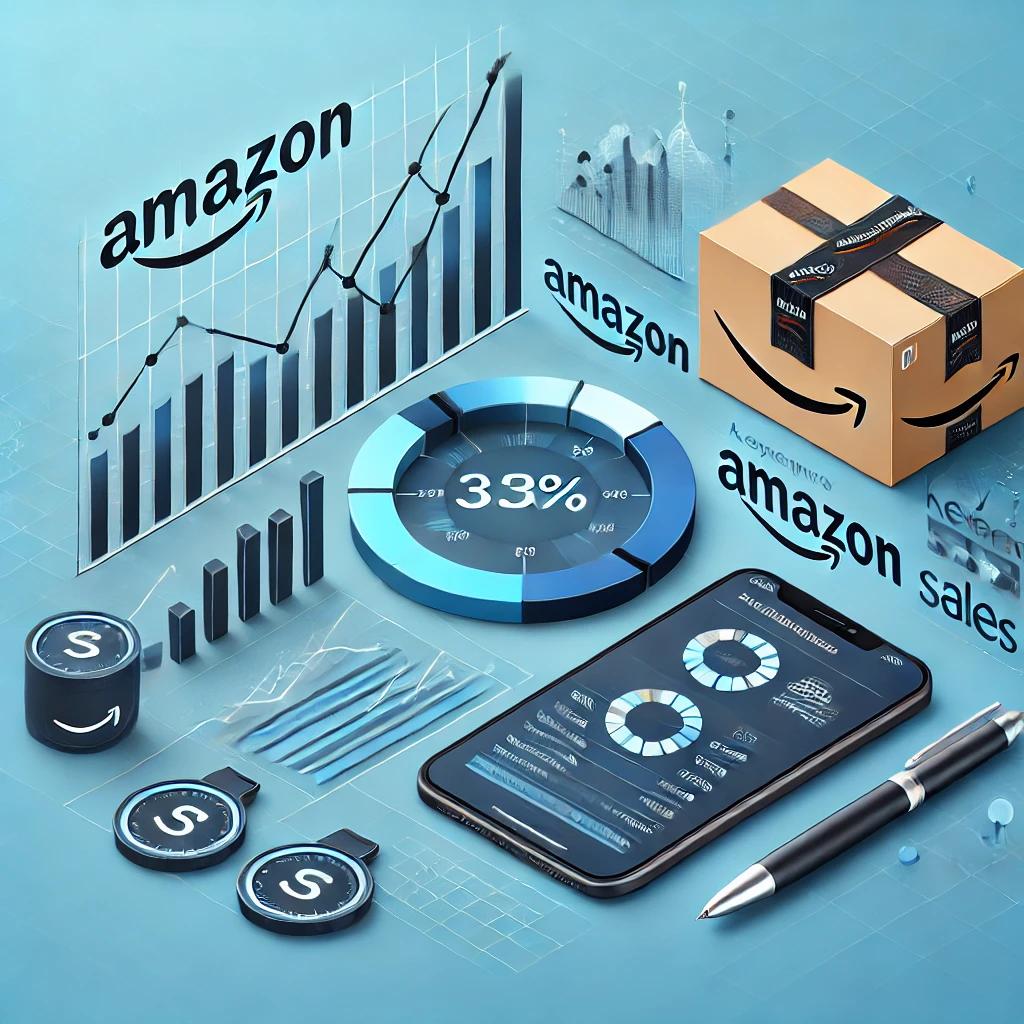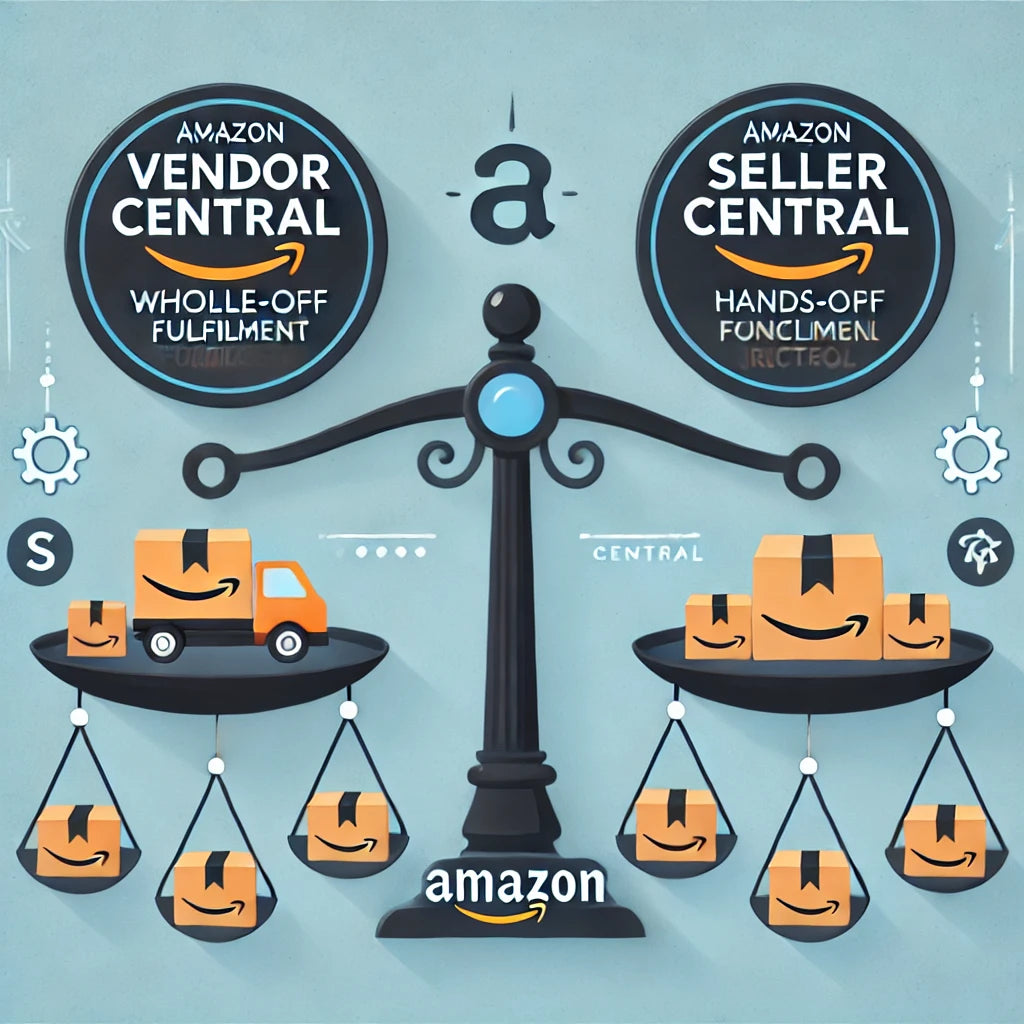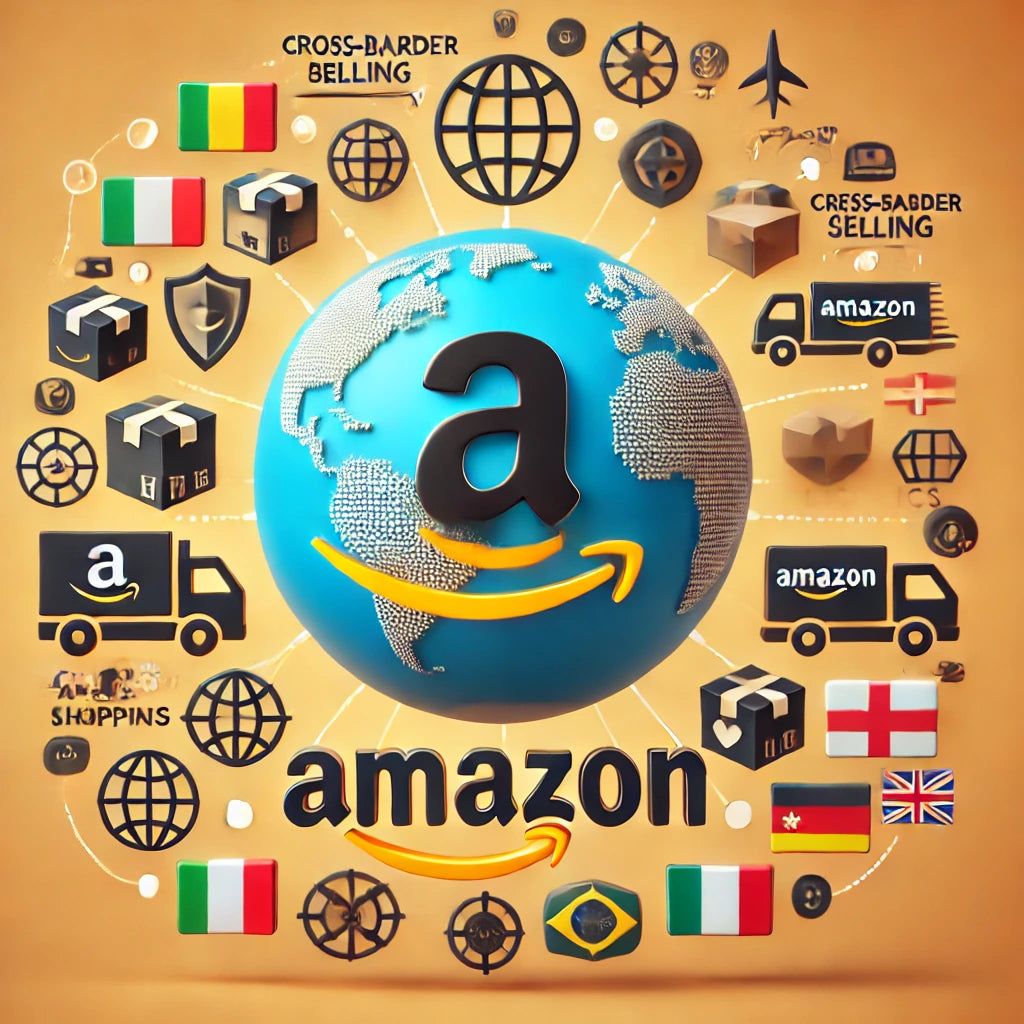STEVE, company.com
Analyzing Amazon Sales Data: Metrics and KPIs You Should Track

Analyzing sales data is crucial for understanding your business performance on Amazon. Tracking the right metrics and key performance indicators (KPIs) can help you make informed decisions and optimize your strategy. With over 15 years of experience selling on Amazon, I’ve identified the most important metrics to monitor.
Sales Metrics: Sales metrics provide a snapshot of your overall sales performance. Key sales metrics include:
- Total Sales: The total revenue generated from your sales over a specific period. Monitoring total sales helps you understand your revenue trends.
- Units Sold: The total number of units sold. This metric gives insight into the volume of sales and product demand.
- Average Order Value (AOV): The average amount spent per order. A higher AOV indicates that customers are purchasing more or higher-priced items.
Conversion Metrics: Conversion metrics measure the effectiveness of your listings in turning visitors into buyers. Important conversion metrics include:
- Conversion Rate: The percentage of visitors who make a purchase. Improving your conversion rate can significantly boost your sales. For tips on optimizing your listings to increase conversions, check out The Ultimate Guide to Optimizing Your Amazon Product Listings.
- Click-Through Rate (CTR): The percentage of people who click on your product listing after seeing it in search results. A higher CTR indicates that your listing is attractive and relevant to customers.
Advertising Metrics: If you’re using Amazon’s advertising tools, monitor metrics like:
- Advertising Cost of Sales (ACoS): The ratio of ad spend to sales revenue generated from ads. A lower ACoS indicates a more efficient advertising campaign.
- Return on Advertising Spend (ROAS): The amount of revenue generated for every dollar spent on ads. A higher ROAS means your ads are generating more revenue.
- Impressions: The number of times your ad is shown. Higher impressions increase the visibility of your products.
Customer Feedback Metrics: Customer feedback and ratings are crucial for maintaining a positive seller reputation. Key metrics to track include:
- Feedback Score: The average rating from customer feedback. A higher score reflects better customer satisfaction.
- Review Ratings: The average star rating from product reviews. Higher ratings can improve your product's visibility and credibility. For more on managing customer feedback, see The Power of Customer Reviews and Ratings.
Operational Metrics: Operational metrics help you manage your inventory and fulfillment processes. Important metrics include:
- Order Defect Rate (ODR): The percentage of orders with defects, including negative feedback, A-to-Z claims, and chargebacks. Keeping your ODR below 1% is crucial for maintaining good standing with Amazon.
- Late Shipment Rate: The percentage of orders shipped after the expected ship date. A lower late shipment rate ensures timely delivery and better customer satisfaction.
- Inventory Turnover: The rate at which inventory is sold and replaced over a specific period. Higher turnover indicates efficient inventory management. For more on managing your inventory, read Common Amazon Seller Mistakes and How to Avoid Them.
Financial Metrics: Financial metrics provide insights into the profitability of your business. Key financial metrics include:
- Gross Profit Margin: The difference between revenue and the cost of goods sold (COGS), expressed as a percentage of revenue. A higher margin indicates better profitability.
- Net Profit Margin: The percentage of revenue remaining after all expenses, including COGS, operating expenses, and taxes. A higher net profit margin indicates a more profitable business.
Leveraging Data for Decision Making: Regularly analyzing these metrics allows you to make data-driven decisions. Use Amazon’s analytics tools to monitor your performance metrics. Analyzing this data can help you identify areas for improvement. Regularly updating and optimizing your strategies based on these insights can enhance your business performance.
Conclusion: Regularly analyzing your Amazon sales data is essential for optimizing your business strategy. By monitoring key metrics and KPIs, you can make informed decisions and drive growth. Use these insights to continuously refine your approach and stay competitive in the Amazon marketplace
Related articles
Amazon Vendor Central vs. Seller Central: Which is Right for You?
STEVE | 25 Jun 2024Deciding between Amazon Vendor Central and Seller Central is a crucial step for your Amazon business strategy. Each platform has its own set of benefits and challenges. With over 15 years of experience selling on Amazon, I’ve had the opportunity to work with both. In this guide, I’ll break down the key differences between Vendor Central and Seller Central to help you decide which is the best fit for your business. 1. Understanding Vendor Central: Amazon Vendor Central is an invite-only platform where you sell your products directly to Amazon, who then sells them to customers. Pros: Wholesale Model: You sell your products in bulk to Amazon, which can lead to large purchase orders and immediate cash flow. Marketing Support: Vendors often receive marketing support and promotions from Amazon. Hands-Off Fulfillment: Amazon handles all aspects of fulfillment, including shipping and customer service. Cons: Less Control: Limited control over pricing, inventory, and branding. Margin Pressure: Amazon negotiates wholesale prices, which can be lower than what you might achieve through Seller Central. 2. Understanding Seller Central: Amazon Seller Central allows you to sell directly to consumers on the Amazon marketplace, either using Fulfillment by Amazon (FBA) or fulfilling orders yourself. Pros: Greater Control: You have full control over pricing, inventory, and branding. Higher Margins: Potential for higher margins as you set your own prices. Flexibility: More flexibility in managing your sales strategies and product listings. Cons: More Responsibilities: You handle inventory management, pricing strategies, and customer service. Fulfillment Challenges: If you’re not using FBA, you must manage shipping and returns. 3. Key Differences to Consider: Pricing Control: Seller Central gives you more control over pricing, allowing you to adjust based on market conditions. Vendor Central’s wholesale model means Amazon sets the retail price. Branding: Seller Central offers more opportunities for branding through enhanced content and custom storefronts. Vendor Central has limited branding options. Fulfillment: Vendor Central handles all fulfillment and customer service, making it a hands-off process for vendors. Seller Central requires you to manage these aspects unless you use FBA. 4. Which Platform is Right for You? The decision between Vendor Central and Seller Central depends on your business goals and resources. Vendor Central is Ideal for: Businesses with high-volume, low-margin products. Those seeking a hands-off approach to fulfillment and customer service. Brands looking for immediate large purchase orders and cash flow. Seller Central is Ideal for: Businesses seeking greater control over pricing, branding, and inventory. Those willing to manage fulfillment and customer service, or those using FBA. For more on using FBA, check out Using Amazon FBA to Scale Your Business: Pros and Cons. Brands aiming for higher margins and flexible sales strategies. Personal Experience and Advice: When I first started, I used Seller Central because it gave me the control I needed to build my brand. However, as my business grew, I saw the benefits of Vendor Central for larger volume sales. My advice? Start with Seller Central to establish your brand and understand the marketplace dynamics. Once you’re ready for larger orders and want to offload fulfillment responsibilities, consider Vendor Central. Conclusion: Choosing between Amazon Vendor Central and Seller Central depends on your business goals, resources, and the level of control you want over your products. Both platforms offer unique benefits that can help you grow your Amazon business. By understanding the key differences and evaluating your specific needs, you can make an informed decision that aligns with your business strategy
Read moreCross-Border Selling on Amazon: A Comprehensive Guide
STEVE | 25 Jun 2024Expanding your business internationally through Amazon's cross-border selling program can open up a world of opportunities. However, it also comes with its own set of challenges. With over 15 years of experience navigating the complexities of Amazon’s marketplace, I’ve learned the ins and outs of selling across borders. Let’s dive into the strategies and best practices for successful cross-border selling on Amazon. 1. Understanding Market Demand: Before diving into cross-border selling, it’s crucial to understand the demand in your target markets. Market Research: Use tools like Jungle Scout and Helium 10 to assess market demand and competition in different countries. Analyze search trends and customer preferences. Local Trends: Keep an eye on local trends and seasonal variations that may affect demand. This will help you stock the right products at the right time. 2. Compliance and Regulations: Each country has its own set of regulations and compliance requirements. Understanding these is key to avoiding legal issues and ensuring smooth operations. Customs and Duties: Research the customs regulations and duties for each country you plan to sell in. Factor these costs into your pricing strategy. Product Compliance: Ensure your products meet the safety and compliance standards of the target market. This may include certifications, labeling requirements, and safety standards. 3. Fulfillment Options: Choosing the right fulfillment option is crucial for efficient cross-border selling. Fulfillment by Amazon (FBA): FBA is a popular choice for cross-border sellers due to its extensive logistics network and customer service. Amazon handles storage, packaging, and shipping, which simplifies the process. Third-Party Logistics (3PL): If FBA is not a viable option, consider partnering with a reliable third-party logistics provider that specializes in international shipping. 4. Pricing Strategy: Setting the right price for your products in international markets can be challenging. Currency Fluctuations: Monitor currency exchange rates and adjust your prices accordingly to maintain profitability. Competitive Pricing: Research the pricing of similar products in your target market and adjust your prices to stay competitive while covering additional costs like shipping and customs duties. 5. Marketing and Localization: Adapting your marketing strategy to fit the local culture and language can significantly impact your success. Localization: Translate your product listings, marketing materials, and customer service communications into the local language. Consider cultural nuances to ensure your message resonates with local customers. Advertising: Utilize Amazon’s advertising tools to target customers in your chosen markets. Sponsored Products and Sponsored Brands can help increase visibility and drive sales. Personal Experience and Advice: When I first ventured into cross-border selling, I underestimated the importance of localization. Adapting my listings and marketing strategy to fit the local culture and language made a significant difference in my sales. My advice? Invest time and resources into understanding and adapting to each market you enter. Conclusion: Cross-border selling on Amazon offers immense growth potential, but it requires careful planning and execution. By understanding market demand, complying with local regulations, choosing the right fulfillment option, setting a competitive pricing strategy, and localizing your marketing efforts, you can successfully expand your business internationally. A Word of Advice: Remember, patience and persistence are key to successful cross-border selling. Stay informed about market trends, continuously optimize your strategy, and be prepared to adapt to new challenges. And don’t forget to enjoy the journey—exploring new markets can be an exciting adventure
Read more

